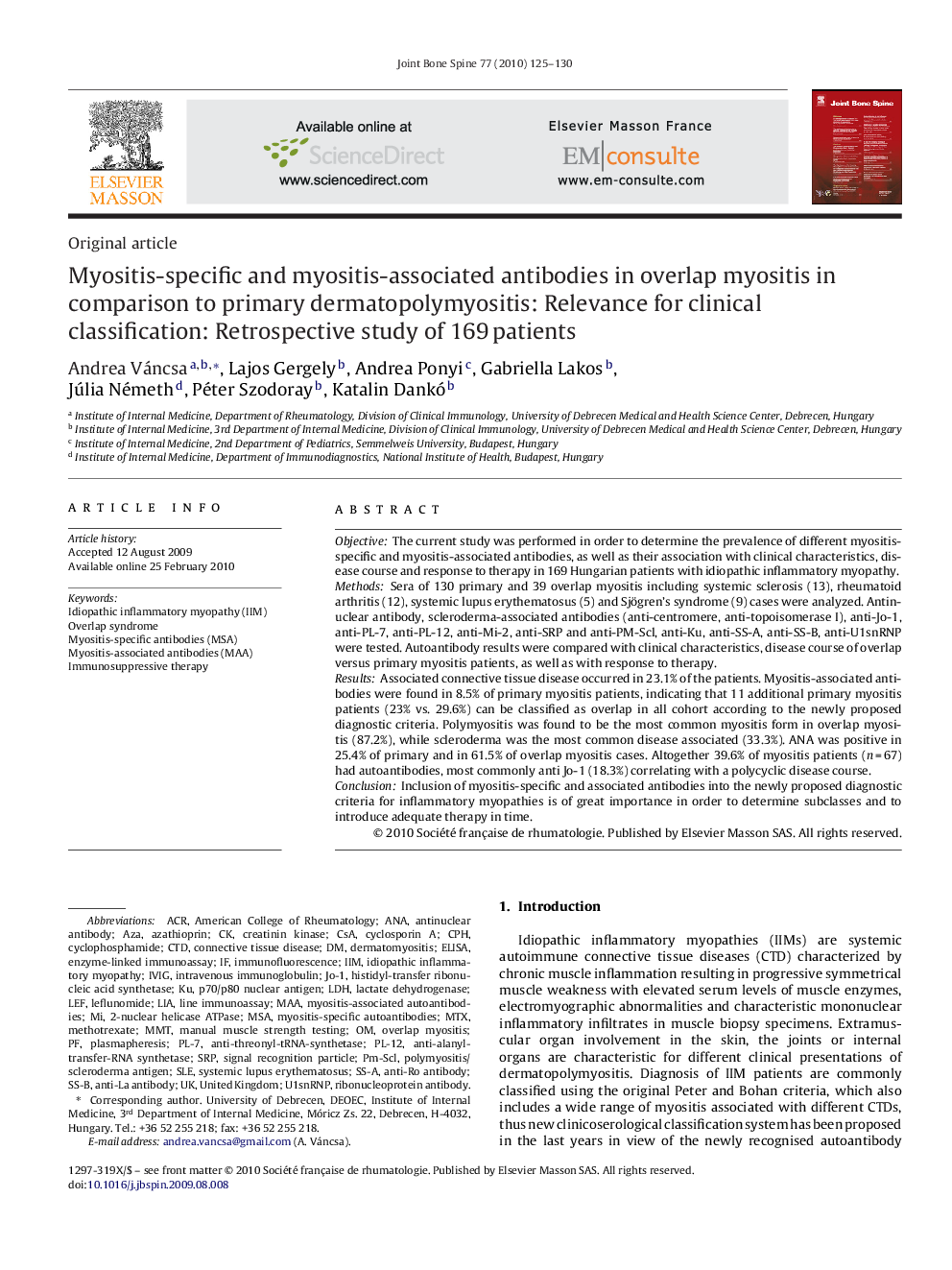| Article ID | Journal | Published Year | Pages | File Type |
|---|---|---|---|---|
| 3366991 | Joint Bone Spine | 2010 | 6 Pages |
ObjectiveThe current study was performed in order to determine the prevalence of different myositis-specific and myositis-associated antibodies, as well as their association with clinical characteristics, disease course and response to therapy in 169 Hungarian patients with idiopathic inflammatory myopathy.MethodsSera of 130 primary and 39 overlap myositis including systemic sclerosis (13), rheumatoid arthritis (12), systemic lupus erythematosus (5) and Sjögren's syndrome (9) cases were analyzed. Antinuclear antibody, scleroderma-associated antibodies (anti-centromere, anti-topoisomerase I), anti-Jo-1, anti-PL-7, anti-PL-12, anti-Mi-2, anti-SRP and anti-PM-Scl, anti-Ku, anti-SS-A, anti-SS-B, anti-U1snRNP were tested. Autoantibody results were compared with clinical characteristics, disease course of overlap versus primary myositis patients, as well as with response to therapy.ResultsAssociated connective tissue disease occurred in 23.1% of the patients. Myositis-associated antibodies were found in 8.5% of primary myositis patients, indicating that 11 additional primary myositis patients (23% vs. 29.6%) can be classified as overlap in all cohort according to the newly proposed diagnostic criteria. Polymyositis was found to be the most common myositis form in overlap myositis (87.2%), while scleroderma was the most common disease associated (33.3%). ANA was positive in 25.4% of primary and in 61.5% of overlap myositis cases. Altogether 39.6% of myositis patients (n = 67) had autoantibodies, most commonly anti Jo-1 (18.3%) correlating with a polycyclic disease course.ConclusionInclusion of myositis-specific and associated antibodies into the newly proposed diagnostic criteria for inflammatory myopathies is of great importance in order to determine subclasses and to introduce adequate therapy in time.
